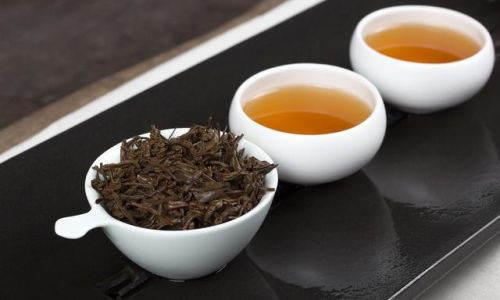Table of content
A Comprehensive Guide to Cooking Half-Smooth Tongue Sole: Techniques, Recipes, and Tips for a Delicious Seafood Experience*
The half-smooth tongue sole (Cynoglossus semilaevis*) is a prized flatfish celebrated for its delicate flavor, tender texture, and versatility in the kitchen. Native to the coastal waters of East Asia, this species has gained international acclaim for its culinary appeal. Whether you’re a seasoned chef or a home cook looking to expand your seafood repertoire, mastering the art of preparing half-smooth tongue sole opens doors to a world of gourmet possibilities. This guide will explore everything from selecting the freshest fish to executing advanced cooking techniques, ensuring your dishes impress even the most discerning palates.
Selecting and Storing Half-Smooth Tongue Sole
The foundation of a memorable meal begins with sourcing high-quality fish. When purchasing half-smooth tongue sole, prioritize freshness:

- Appearance: Look for vibrant, glossy skin with a consistent beige or light brown hue. Avoid fish with dull patches, discoloration, or bruises.
- Eyes: Fresh specimens should have clear, bulging eyes. Cloudy or sunken eyes indicate age or improper handling.
- Smell: A mild, briny aroma is normal. Avoid fish with a strong, fishy, or ammonia-like odor.
- Texture: The flesh should bounce back when pressed gently. Mushy or indented areas suggest spoilage.
If purchasing whole fish, ensure the gills are bright red (not brown) and the scales adhere tightly. For fillets, check for uniform thickness and no signs of freezer burn (if frozen).
Storage Tips:
- Refrigeration: Store fresh fish in the coldest part of your refrigerator (32–34°F/0–1°C) for no more than 1–2 days. Wrap it in parchment paper or place it in a breathable container to prevent moisture buildup.
- Freezing: For longer storage, vacuum-seal fillets or whole fish and freeze at 0°F (-18°C). Consume within 3 months for optimal quality.
Preparation: Cleaning and Filleting
Proper preparation ensures the fish cooks evenly and maximizes flavor.
-
Scaling (if necessary):
While half-smooth tongue sole has tiny scales, some recipes may require descaling. Use a scaling tool or the back of a knife to gently scrape from tail to head under cold running water.
-
Gutting:
If cooking whole, make a shallow incision along the belly, from anus to gills. Remove intestines and gills carefully to avoid piercing the bitter-tasting gallbladder.
-
Filleting:
Lay the fish flat on a cutting board. Using a sharp, flexible fillet knife, slice behind the gills and pectoral fin, angling the blade along the backbone. Glide the knife along the ribs to release the fillet. Repeat on the other side.
-
Trimming:
Remove any remaining pin bones with kitchen tweezers. Trim the fins and belly flaps for a neat presentation.
Marinating:
Enhance the fish’s natural sweetness with light marinades. A simple 15–30 minute soak in:
- 2 tbsp soy sauce
- 1 tbsp rice wine (or mirin)
- 1 tsp sesame oil
- 1 tsp grated ginger
- 1 minced garlic clove
Avoid acidic marinades (e.g., citrus), as they can “cook” the fish and toughen the flesh.
Cooking Methods: From Classic to Creative
Steaming: Preserving Purity
Steaming highlights the fish’s delicate flavor and flaky texture.
Ingredients (serves 4):

- 4 fillets (6 oz each)
- 2 tbsp fresh ginger, julienned
- 3 scallions, cut into 3-inch batons
- 2 tbsp soy sauce
- 1 tbsp peanut oil
- 1 red chili, thinly sliced (optional)
Instructions:
- Place fillets on a heatproof plate. Top with ginger and half the scallions.
- Steam over boiling water for 8–10 minutes (until flesh turns opaque).
- Heat peanut oil until smoking. Drizzle over the fish, then garnish with remaining scallions, chili, and soy sauce.
Pro Tip: For a restaurant-quality finish, add a splash of Shaoxing wine to the steaming liquid.
Pan-Frying: Crispy Skin Perfection
Achieving a golden, crackling skin requires precision.
Ingredients (serves 4):
- 4 whole fish (scaled and gutted) or 8 fillets
- 1/4 cup cornstarch (for dusting)
- 1/4 cup vegetable oil
- 3 garlic cloves, minced
- 1 tbsp fermented black beans, rinsed
- 1/4 cup chicken stock
- 1 tbsp oyster sauce
- 1 tbsp cilantro, chopped
Instructions:
- Pat the fish dry. Lightly dust skin-side with cornstarch.
- Heat oil in a nonstick skillet over medium-high. Fry fish skin-side down for 4–5 minutes until crisp. Flip and cook 2–3 minutes more. Remove and drain on paper towels.
- In the same pan, sauté garlic and black beans until fragrant. Add stock and oyster sauce; reduce by half.
- Spoon sauce over fish and garnish with cilantro.
Chef’s Secret: Use a fish spatula to prevent breakage when flipping.
Baking: Hands-Off Elegance
Oven-roasting yields moist, evenly cooked fillets.
Ingredients (serves 4):
- 4 fillets
- 2 tbsp olive oil
- 1 lemon, sliced
- 4 thyme sprigs
- 1/4 cup white wine
- 2 tbsp unsalted butter
- Salt and pepper
Instructions:
- Preheat oven to 375°F (190°C).
- Place fillets in a baking dish. Drizzle with oil, wine, and dot with butter. Top with lemon slices and thyme.
- Bake 12–15 minutes until flesh flakes easily. Broil 1–2 minutes for browning.
Variation: Substitute lemon with orange and add fennel fronds for a Mediterranean twist.
Braising: Rich and Flavorful
Braising in a fragrant broth transforms the fish into a comforting stew.
Ingredients (serves 4):
- 2 whole fish, cleaned
- 1 tbsp fermented bean paste
- 4 cups dashi (or vegetable stock)
- 1 carrot, julienned
- 1 daikon radish, julienned
- 2 tbsp sake
- 1 tbsp miso paste
- 4 shiitake mushrooms, sliced
Instructions:
- Sauté bean paste in a pot until fragrant. Add dashi, sake, and miso; simmer 5 minutes.
- Gently submerge fish and vegetables. Cover and braise 15–20 minutes over low heat.
- Serve with steamed rice and a sprinkle of toasted sesame seeds.
Serving Suggestions and Pairings
- Starch Pairings: Jasmine rice, sticky rice, or udon noodles.
- Vegetables: Stir-fried bok choy, garlic spinach, or roasted asparagus.
- Sauces: Light soy-ginger dip, chili crisp, or a tangy ponzu.
- Beverages: Crisp Riesling, unoaked Chardonnay, or green tea.
Expert Tips for Success
- Avoid Overcooking: Flatfish cook rapidly. Remove from heat when the internal temperature reaches 135°F (57°C).
- Skin Crispness: For pan-frying, ensure the skin is bone-dry before cooking.
- Flavor Balance: The fish’s mildness pairs well with bold flavors like ginger, garlic, and citrus.
- Leftovers: Flake cooked fish into salads, tacos, or omelets.
Conclusion
Half-smooth tongue sole is a culinary chameleon, equally at home in a minimalist steamed dish or a complex braise. By mastering these techniques, you’ll elevate your seafood game and create memorable meals that celebrate the fish’s unique qualities. Whether you’re hosting a dinner party or enjoying a quiet evening in, this versatile flatfish promises a dining experience that’s both sophisticated and deeply satisfying. Bon appétit!






0 comments